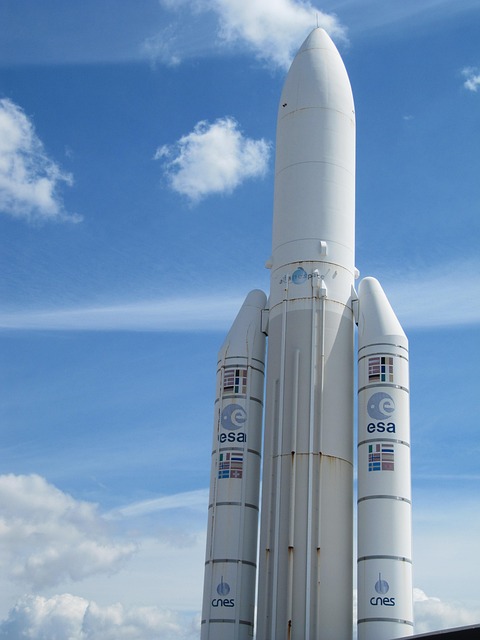Suborbital Tourism: The Next Frontier of Luxury Travel
Imagine soaring to the edge of space, witnessing the curvature of the Earth, and experiencing weightlessness, all within a few hours. This isn't science fiction; it's the burgeoning reality of suborbital tourism. As private space companies push the boundaries of technology and accessibility, a new era of extraterrestrial travel is dawning, promising to redefine luxury experiences and reshape our perspective on our planet.

The concept of commercial spaceflight dates back to the early 2000s when pioneering entrepreneurs began investing in private space ventures. These visionaries saw the potential for a new industry that could offer civilians the opportunity to experience space travel, previously reserved for highly trained astronauts.
The Technology Behind Suborbital Flights
Suborbital vehicles employ cutting-edge aerospace technology to achieve their impressive feats. These spacecraft typically use a combination of rocket propulsion and aerodynamic lifting surfaces to reach altitudes of around 100 kilometers – the internationally recognized boundary of space known as the Kármán line.
The flight profile of a suborbital journey is a parabolic arc, resembling a massive roller coaster ride. Passengers experience intense G-forces during ascent and re-entry, punctuated by several minutes of weightlessness at the flight’s apex. This unique trajectory allows travelers to witness the blackness of space and the blue curve of Earth’s atmosphere without achieving orbit.
The Suborbital Tourist Experience
For aspiring space tourists, the journey begins long before liftoff. Passengers undergo medical screenings and participate in training programs to prepare for the physical and mental demands of spaceflight. This pre-flight experience often includes simulations of G-forces and weightlessness, fostering camaraderie among fellow space adventurers.
On launch day, travelers don specially designed flight suits and board their spacecraft, which may be a winged vehicle or a more traditional capsule design. As the countdown reaches zero, powerful engines ignite, propelling passengers skyward at supersonic speeds. Within minutes, the curvature of the Earth becomes visible, and the sky transitions from blue to the inky blackness of space.
At the flight’s highest point, engines cut off, and passengers experience several minutes of microgravity. During this time, they can unbuckle and float freely inside the cabin, marveling at the planet below through large windows. The descent begins shortly after, with the spacecraft gliding or parachuting back to Earth for a gentle landing.
The Major Players in Suborbital Tourism
Several companies are vying for dominance in the nascent suborbital tourism market, each with its unique approach and spacecraft design. Virgin Galactic, founded by Sir Richard Branson, uses a carrier aircraft to launch its SpaceShipTwo vehicle, which then rockets to suborbital altitudes. Blue Origin, established by Amazon founder Jeff Bezos, employs a more traditional vertical launch system with its New Shepard capsule.
These companies have already conducted successful test flights with civilian passengers, including their founders, marking significant milestones in the commercialization of space travel. As operations ramp up, they aim to offer regular flights to paying customers, with tickets currently priced in the hundreds of thousands of dollars.
The Impact on Travel and Beyond
Suborbital tourism is poised to revolutionize the concept of extreme travel experiences. For those who can afford it, a trip to space represents the ultimate adventure, offering a perspective-altering glimpse of our planet that few have ever witnessed. This exclusive view of Earth from space, known as the Overview Effect, is said to profoundly impact astronauts’ worldviews, fostering a sense of global unity and environmental consciousness.
Beyond the immediate thrill for passengers, the development of suborbital tourism has far-reaching implications. The technology and operational experience gained from these flights could pave the way for faster point-to-point travel on Earth, potentially reducing intercontinental flight times to under an hour. Additionally, the industry is driving innovation in aerospace engineering, materials science, and life support systems, with potential applications in various fields.
Cosmic Considerations for Aspiring Space Tourists
• Health requirements are stringent; prospective passengers should be in excellent physical condition and free from serious medical issues.
• The g-forces experienced during flight can be intense, reaching up to 6G during re-entry.
• Weightlessness lasts only a few minutes but offers a unique opportunity to float freely in the spacecraft cabin.
• Photography is challenging in the microgravity environment; many operators provide professional video and photo services.
• Environmental impact is a concern; space tourism companies are working on minimizing their carbon footprint through reusable vehicles and sustainable fuels.
As suborbital tourism transitions from science fiction to reality, it heralds a new chapter in the history of human exploration. While currently accessible to only a fortunate few, this revolutionary form of travel promises to expand our horizons, both literally and figuratively. As technology advances and costs decrease, the dream of touching the stars may one day be within reach for a broader spectrum of adventure seekers, forever changing our relationship with space and our perception of our celestial home.





